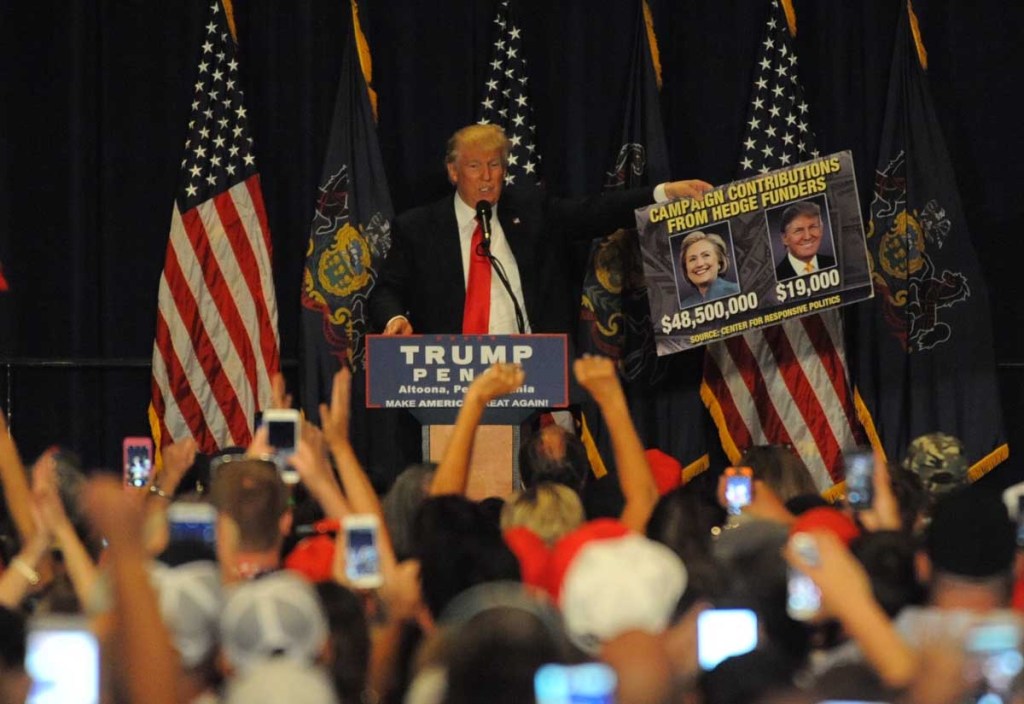Trump’s trillion-dollar infrastructure plan faces early scrutiny
Published 6:50 am Tuesday, November 29, 2016

- Donald Trump speaks at the Blair County Convention Center in Altoona, on Friday, Aug.12, 2016.
WASHINGTON — President-elect Donald Trump may be proposing a trillion-dollar infrastructure plan, but depending on how he’d pay for it, he could run into opposition from fellow Republicans concerned about adding to the nation’s deficit.
The most recent example came Monday when Oklahoma Sen. James Lankford said he would be dubious about a stimulus plan that simply increases spending.
Trending
“My first question will be how do we pay for it,” Lankford said in response to a question at a press conference where he highlighted examples of what he considers to be $247 billion in wasteful federal government spending.
Among his complaints were grants to see how children feel about eating food that’s been sneezed on or to study ancient Icelandic graves.
Lankford did not say that he’s opposed to Trump’s call to create more jobs by rebuilding bridges, highways and airports over the next decade. Taking care of the nation’s infrastructure is among the things that the government should spend money on, he told reporters at the Capitol.
However, Trump has not said how he will pay for the projects. Lankford said he’d be opposed if it means simply spending money, as he described President Barack Obama’s $787 billion economic stimulus in 2009.
“This cannot be a big deficit stimulus package. … If the conversation is that if only the federal government will spend more money, the economy will get better, it never recovers that way,” he said.
Several other Republicans have also held off backing Trump’s plan until he lays out where the money will come from.
Politico reported last week that a number of ideas are being floated by Trump advisers to pay for the improvements – such as taxing offshore business income, using federal dollars to incentivize state and private spending, or allowing private investors to recoup money on government projects by charging tolls and other fees.
Lankford said he favors cutting other areas to pay for infrastructure or expanding the military, another of Trump’s campaign promises.
The government, added Lankford, will have to say, “We can’t do this because we have to do that.”
The challenge is those cuts must come on top of steps to reduce the nation’s $587 billion deficit.
And, in identifying billions of dollars worth of wasteful spending, Lankford has mostly focused on balancing the budget.
Even if the government eliminates all of the expenses he identified yesterday, he said, “We still haven’t solved the deficit.”
“I’m not opposed to every grant. I’m not opposed to science,” he said.
But spending should be prioritized, he said, to help national security or the economy.
Some grants doesn’t seem to meet the test, he said.
The National Science Foundation, for example, handed out a $200,000 grant to study fish bone and ceramic fragments to see if there is a connection between social status and the types of food eaten in the 14th- to 16th century town of Songo Mnara, Tanzania, according to Lankford’s report.
The agency funded a $500,000 study to examine Icelandic church graveyards and their historical connections to politics and religion, and another $72,000 to figure out the best way for archaeologists to scan for cemeteries on church grounds.
“I’m not sure what the connection to the American economy is, or how that helps us in the long term, to do grave-digging in Iceland,” he said.
The National Science Foundation and other agencies cited by Lankford’s report on government spending did not immediately return press inquiries.
Among other issues he highlighted is the spending of $55 million to $80 million annually to maintain outdated technology, including the use of floppy discs, in Defense Department computers that control the nation’s nuclear weapons.
He also highlighted a $2 million National Institutes of Health study into how the presentation of food influences a child’s preference. Among its findings: Children ages 5 to 8 prefer clean food, compared to food that has been sneezed on.
“I think we could have answered that question for less than $2 million,” he said.
Kery Murakami is the Washington, D.C. reporter for CNHI’s newspapers and websites. Contact him at kmurakami@cnhi.com.


